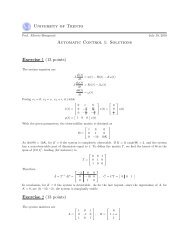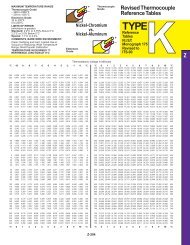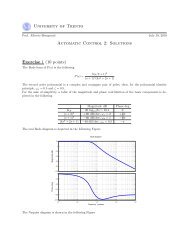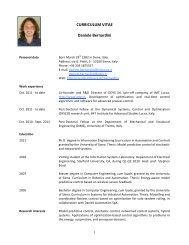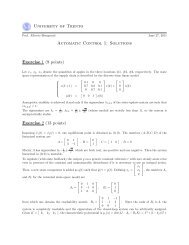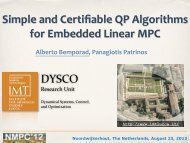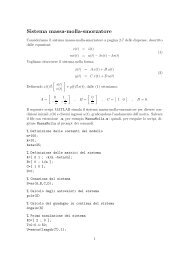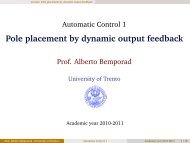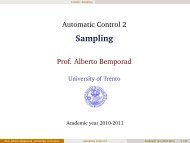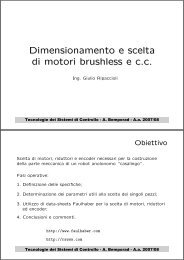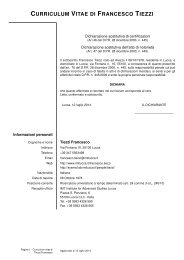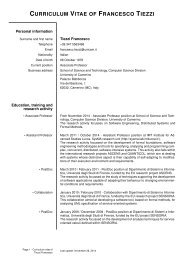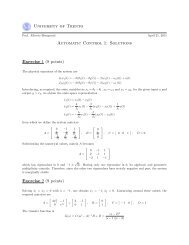Automatic Control 1 - Reachability Analysis
Automatic Control 1 - Reachability Analysis
Automatic Control 1 - Reachability Analysis
- No tags were found...
You also want an ePaper? Increase the reach of your titles
YUMPU automatically turns print PDFs into web optimized ePapers that Google loves.
Lecture: <strong>Reachability</strong> <strong>Analysis</strong><strong>Reachability</strong> <strong>Analysis</strong><strong>Reachability</strong>TheoremThe system (A, B) is completely reachable ⇔ rank(R) = nProof:(⇒) Assume (A, B) reachable, choose x 1 = 0 and x 2 = x. Then ∃k ≥ 0 such that∑k−1x = A j Bu(k − 1 − j)j=0If k ≤ n, then clearly x ∈ Im(R). If k > n, by Cayley-Hamilton theorem we haveagain x ∈ Im(R). Since x is arbitrary, Im(R) = n , so rank(R) = n.(⇐) If rank(R) = n, then Im(R) = n . Let X = x 2 − A n x 1 andU = u(n − 1) ′ . . . u(1) ′ u(0) ′ ′ . The system X = RU can be solved with respect toU, ∀X, so any state x 1 can be transferred to x 2 in k = n steps. Therefore, thesystem (A, B) is completely reachable.Prof. Alberto Bemporad (University of Trento) <strong>Automatic</strong> <strong>Control</strong> 1 Academic year 2010-2011 9 / 23



